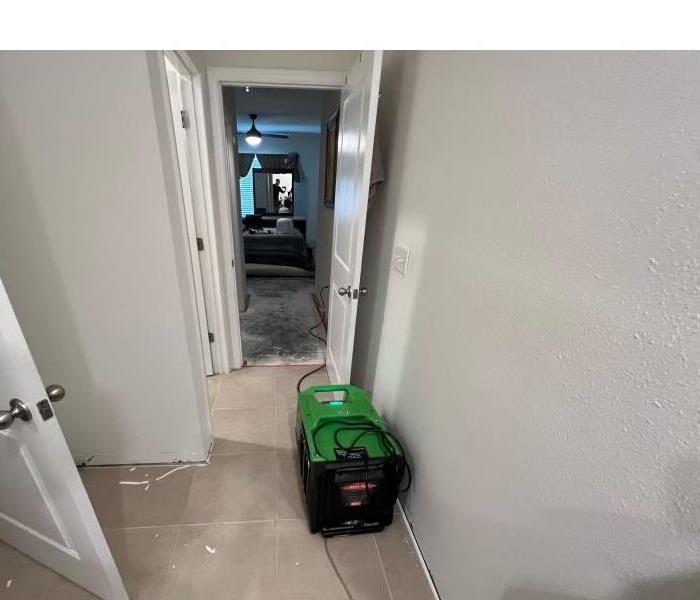How to Avoid Water Damage From Condensation on Your HVAC.
8/7/2023 (Permalink)
During the warmer months, you are most likely to be running your HVAC more than ever to keep it cool in your home or business. Because of this, your HVAC creates plenty of condensation. That water needs somewhere to go and it’s easy for those lines to become clogged very quickly. This can cause your emergency line to either break or your drop pan to overfill. So what are you supposed to do if this happens and causes water damage?
- First, call your HVAC company to service your unit. This is probably the easiest and most efficient method, however you will have to pay for the service.
- Make sure you check your primary condensation line is slowly dripping water when your HVAC is on. This is usually located near the ground outside the home located in an area of high foot traffic.
- If your primary line is not dripping check the secondary line, usually located somewhere like above a window or door.
- If the primary, or both lines are not dripping while the unit is on, that means there is blockage. Find a way to flush out or remove the potential blockage. The cleanout will usually be located close to the HVAC main unit. Make sure you thoroughly research how to properly clear your lines before attempting to!
- Check your HVAC unit drip pan, make sure it has no holes or rust around it. If it is damaged you may need to replace it.
If you have experienced issues with water damage due to your HVAC leaking, call SERVPRO of Bay County today at (850) 785-1077!






 24/7 Emergency Service
24/7 Emergency Service
